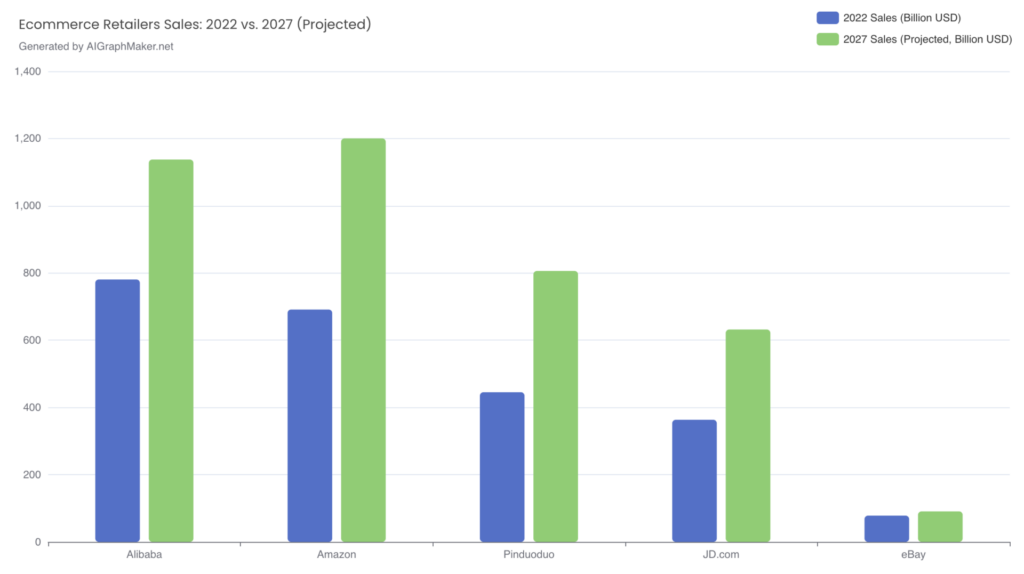Ecommerce continues to thrive, and as an online retailer or fulfillment service provider, understanding the evolving market landscape is crucial. This detailed guide offers comprehensive insights and statistics to help you optimize operations, improve customer experiences, and maximize revenue in 2025.
Global Ecommerce Overview
Globally, there are currently 2.64 billion online buyers, representing over 33% of the world’s total population. This figure has steadily increased, with projections showing it will grow to 2.77 billion by the end of 2025. In the United States alone, 284.60 million people shop online, accounting for more than 81% of the total population.

Revenue Growth and Market Leaders
Ecommerce sales globally are forecasted to reach an impressive $7.39 trillion by 2025, up significantly from $6.15 trillion in 2023.
Alibaba and Amazon are dominating global ecommerce. Alibaba’s ecommerce sales hit $780.70 billion in 2022 and are projected to reach $1.13 trillion by 2027. Amazon follows closely with anticipated sales of $1.20 trillion.

| Ecommerce Retailers | 2022 Sales (Billion USD) | 2027 Sales (Projected, Billion USD) |
| Alibaba | 780.70 | 1,137.50 |
| Amazon | 691.30 | 1,200.50 |
| Pinduoduo | 445.20 | 806.10 |
| JD.com | 363.30 | 631.80 |
| eBay | 78.20 | 90.80 |
Mobile Shopping Trends
Mobile commerce is booming, with 64% of ecommerce traffic coming from mobile devices. By 2026, nearly 200 million Americans are expected to shop using their smartphones, accounting for 69.2% of the U.S. population.
| Year | Mobile Shoppers in the U.S. (Millions) |
| 2026 | 199.50 |
| 2025 | 194.80 |
| 2024 | 190.20 |
| 2023 | 187.00 |
The average order value differs significantly by device, with desktop leading at $146.05, followed by tablets at $99.92, and mobile at $97.72.

Social Commerce
Social commerce is set to surpass $1.2 trillion in sales in the U.S. by 2025. Facebook dominates globally, responsible for 85% of social commerce sales, while Pinterest achieves the highest average order value.
| Platform | Average Order Value (USD) |
| 154 | |
| 103 | |
| 69 | |
| Snapchat | 57 |
Social platforms influencing purchasing decisions:
| Influence Factor | Share of Respondents |
| Friends’ Recommendations | 87% |
| Company Emails | 69% |
| Online Ads | 67% |
| Facebook Content | 54% |
Shopping Behaviors by Generation
Gen Z and Millennials are pivotal to ecommerce growth, with Gen Z expected to control $44 billion in buying power by 2025.
Millennials, the largest online shopper group, demonstrate consistent purchasing habits:
| Frequency | Share of Millennials |
| Always | 12% |
| Very Often | 21% |
| Often | 19% |
| Sometimes | 32% |
| Never | 16% |
Millennials also emphasize online reviews, with 80% never making a purchase without reading reviews first.
Cart Abandonment and Recovery
Cart abandonment averages about 70% worldwide, resulting in an estimated $18 billion loss annually.
Top reasons for cart abandonment:
| Reason | Share of Respondents |
| High Shipping Costs | 63% |
| Re-entering Credit Card Details | 46% |
| Slow Delivery | 36% |
Recovery emails have a 45% open rate, with 21% clicking through. Offering discounts proves highly effective, recovering 54% of abandoned carts.
COVID-19 Impact
The pandemic accelerated ecommerce adoption, significantly boosting online grocery shopping in the U.S. from 36% pre-pandemic to 55% afterward. Ecommerce sales grew by $224.20 billion due to COVID-19, reflecting a 43% increase.
| Country | New Online Shoppers due to COVID-19 |
| Canada | 6% |
| France | 6% |
| Australia | 5% |
| India | 5% |
| United Kingdom | 5% |
| United States | 3% |
Major Sales Events
Events like Black Friday and Cyber Monday remain crucial for ecommerce growth. In 2022, Black Friday drew 87.20 million shoppers online, spending $10.8 billion, while Cyber Monday attracted 77 million shoppers.
| Event | Shoppers (Millions) | Sales (Billion USD) |
| Thanksgiving | 33.60 | 6.1 |
| Black Friday | 87.20 | 10.8 |
| Saturday | 58 | – |
| Sunday | 36 | – |
| Cyber Monday | 77 | – |
Fraud Risks
Ecommerce fraud is a growing concern, causing $41 billion in losses in 2022, projected to increase to $48 billion soon. Prioritizing security and adopting robust fraud prevention measures is essential.
Emerging Trends: Cryptocurrency
Cryptocurrencies are emerging as viable payment options, with 37% of crypto users now transacting digitally, and 14% using it regularly. Embracing cryptocurrencies could position your business as innovative and customer-friendly.
Conclusion and Strategic Insights
Ecommerce is a dynamic industry filled with opportunities and challenges. Optimizing mobile experiences, leveraging social commerce, reducing cart abandonment, capitalizing on major sales events, and securing your transactions against fraud are vital steps. Understanding generational behaviors and exploring emerging trends like cryptocurrency payments will further ensure sustained success.











